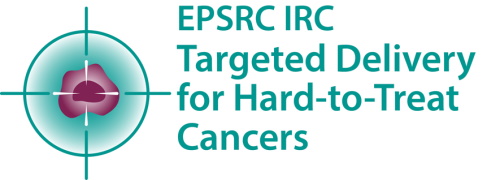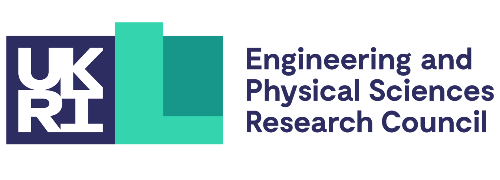
Dr Marianne Ashford is a Senior Principal Scientist in the Advanced Drug Delivery Department within Pharmaceutical Sciences, R&D at AstraZeneca, an Industry Partner of the IRC. Responsible for applying drug delivery approaches which enable the progression of innovative medicines, Dr Ashford explains why drug delivery science is critical to the success of future therapeutics.
The world of drug delivery and drug modalities has changed significantly in the last 25 years. No longer limited to simply improving or prolonging exposure, as it was historically for the majority of small molecules and early peptides, or only required for a small percentage of any drug portfolio, it is now an absolute necessity. Drug delivery is core to enabling the success of the drugs of the future, harnessing new modalities as medicines with the aim of bringing better therapeutics to patients.
Drug delivery scientists must be present at the inception of drug discovery programmes to provide early input to feasibility studies designed to show whether a drug target can be prosecuted by a particular approach and modality, often along with an integrated delivery system. I believe that as drug delivery scientists we can do far more to move towards precision medicine and enable the prosecution of new targets. Dr Marianne Ashford, Senior Principal Scientist, Advanced Drug Delivery Department, Pharmaceutical Sciences, R&D, AstraZeneca
Critical to success
The field of drug delivery is rapidly changing. Drug modalities are diversifying and drug delivery scientists must play a more prominent role – they are core to the genesis of innovative medicines of the future. A drug delivery scientist at heart, I see that drug delivery can be used to enhance the efficacy and tolerability of drugs and make a real difference to therapeutics. My role at AstraZeneca is mainly focused on oncology and making sure we get the right drug candidates to develop, and then use delivery science to improve them. The need for drug delivery is evident as a range of new drug modalities have emerged over recent years including nucleic-based acid therapeutics which require sophisticated drug delivery technologies. New modalities will open up drug target space, which will enable us to treat more diseases, and drug delivery is critical and core to their success.
Drug delivery scientists must be present at the inception of drug discovery programmes to provide early input to feasibility studies designed to show whether a drug target can be prosecuted by a particular approach and modality, often along with an integrated delivery system. I believe that as drug delivery scientists we can do far more to move towards precision medicine and enable the prosecution of new targets.
Collaboration key to innovation
AstraZeneca has been involved with the IRC from the start. There are synergies in the way we work and what we are setting out to achieve – both organisations are exploring targeted drug delivery for cancer. It is good to collaborate and look at new ideas and working with an external group can bring a different perspective. The diverse and different research groups that make the IRC can really drive and support innovation and the multidisciplinary nature of the programme, that features engineers, chemists and clinicians, offers a line of sight from the laboratory to the clinic.
The manufacturing theme running throughout the IRC is significant. Many new technologies fail due to a lack of developability and there can be problems with translating advanced delivery systems into the clinic. If this challenge can be overcome, the journey from concept to clinic could be shorter which is important when time is of the essence. The three cancers targeted by the IRC are hard-to-treat with traditional drugs and currently outcomes for patients are poor. I hope that working together on this well-integrated multidisciplinary project, with AstraZeneca applying our experience and knowledge of translating different systems alongside the IRC’s academic perspective, will help improve the therapeutic landscape.
I have been struck by the speed with which some of the IRC technologies have moved, and impressed by the science and how challenges have been addressed creatively and rapidly. While the level of maturity across the drug delivery technologies differs, the development process is providing more understanding and ideas that can spin off in different directions. Of course, I would love to see at least one of the technologies reaching the clinic. While the challenge is great, I am hopeful. It is a promising time to be a drug delivery scientist. There is more momentum in drug delivery science and greater recognition of the need for a mix of skills to succeed.
Greater awareness
The life sciences’ role in responding to the global pandemic has increased awareness of what science and nanomedicines can do. The scale of the challenge showed how quickly we could respond as an industry, in collaboration with the wider ecosystem. Drug delivery was key to this story, with lipid nanoparticles being a vital component of some of the vaccines. I hope raising awareness of the science will bring more talented students to study STEM subjects and result in a better understanding of what drug delivery can achieve.
We have made good progress in drug delivery. It is certainly an exciting time to be a drug delivery scientist and we need an ever-growing ‘smorgasbord’ of multidisciplinary skills as we build on traditional pharmaceutics skills used for the first-generation technologies to deliver the second, third and fourth generations of delivery technologies.
Harnessing collective knowledge, capabilities, experience and sound fundamental science together with an agile and flexible mindset, strong drive and an ability to collaborate across disciplines is imperative. Learning new skills and robust questioning of data will also aid success. If we are successful, we should make a huge impact on transforming these many new approaches into important innovative medicines of the future.


